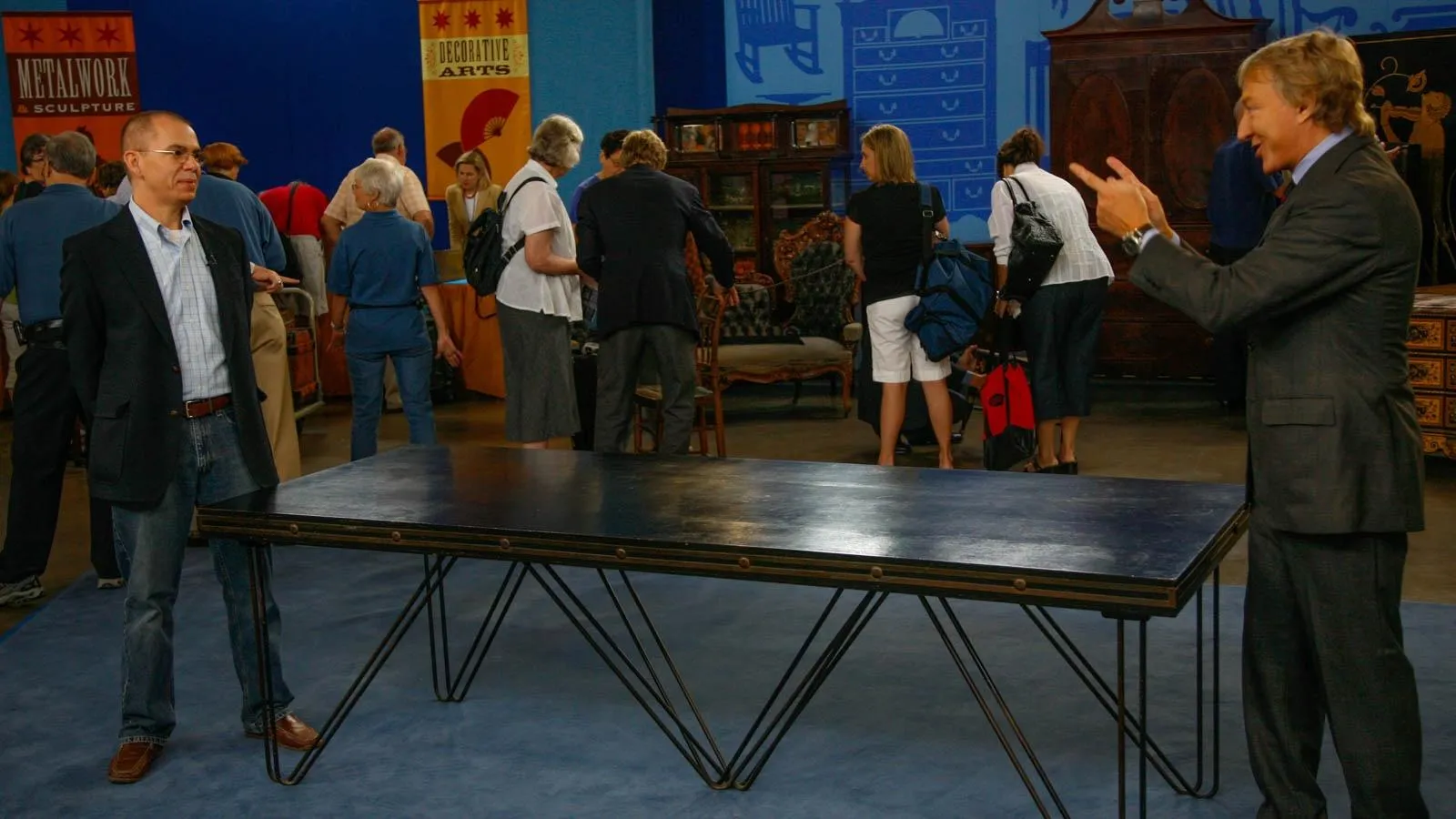GUEST: Back in '77, I had just moved to Houston, Texas, and, uh, I was walking through a, a gallery, and I saw this poster. I was going to buy it, but I didn't think I could really afford it at the time. And I was looking through the Houston Chronicle and saw a picture of this particular poster, and I thought, "Oh, no, somebody's going to buy it." So, I had my girlfriend at the time go down and put it in layaway for three months, and...
APPRAISER: And what was it about the image that appealed to you?
GUEST: Well, I liked the colors, and I liked the Indian coming down the road with these Parisians bowing to him like he's some type of a, a god or something, and it, I just, it just attracted me.
APPRAISER: And, and how much did you end up paying?
GUEST: $350.
APPRAISER: And that was when?
GUEST: 1977.
APPRAISER: So, a few years ago.
GUEST: Oh, yeah.
APPRAISER: It's a French poster.
GUEST: Mm-hmm.
APPRAISER: But it's advertising an American product.
GUEST: Mm-hmm.
APPRAISER: Cleveland Cycles were actually manufactured in Toledo. The poster itself dates from the 1890s-- 1895, 1898, around that time-- when the bicycle craze was really gripping all of the world.
GUEST: Mm-hmm.
APPRAISER: And the Cleveland Cycle Company was one of the world's major manufacturers, large enough that they were able to export their bikes to Europe and to France. You know, the Cleveland Cycle Company doesn't exist anymore, but this was a very accurate depiction of the bike itself, with the curved down handlebars and actually the company logo emblazoned on the front stanchion. Just to show that it is a French poster, the pallet insignia down at the bottom there shows the name and the address of the printer in France who would have printed this poster for their American clients. The poster was done by the artist PAL, but that's his printed name. It's really like a pen name. His actual name-- he was a Romanian-born artist who worked in Paris. Now, my French is not very good. His name was Jean de Paleologue, who primarily was known for his very buxom women. Only a very few of his posters feature men. It's a great story that's being visually depicted here, and I interpret it slightly different than you do, and I think the way it was meant to be interpreted, the people at the side of the road are not actually bowing down to the rider himself. They're bowing down to his great new top-of-the-line American bicycle. Some of whom are wearing cyclists' jerseys, some of whom are women, some of whom are in professional clothes. They have discarded all of their old bicycles along the side of the highway. "Forget about that old, sort of prehistoric junk. Here comes the new great machine." And they're literally worshipping it. Now, one of the reasons this company chose to use the Native American as their symbol is because Europe was gripped by a fascination of all things about the West. The poster was done via a process called stone lithography. The colors are bright. The image is eye-catching. You paid $350 for it.
GUEST: Right, 30-- over 30 years...
APPRAISER: 30-some-odd years ago.
GUEST: Yeah.
APPRAISER: Today, at auction, a poster in this size, this condition, with this image, I would estimate its value between $4,000 and $6,000.
GUEST: Oh, okay.











